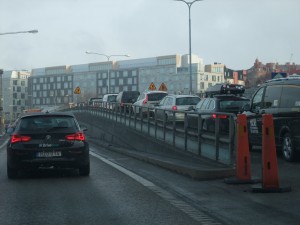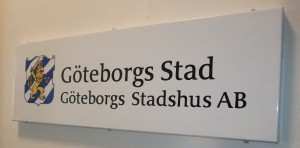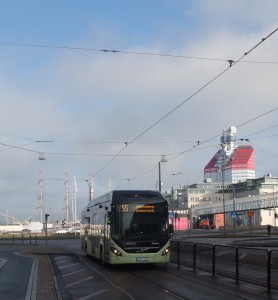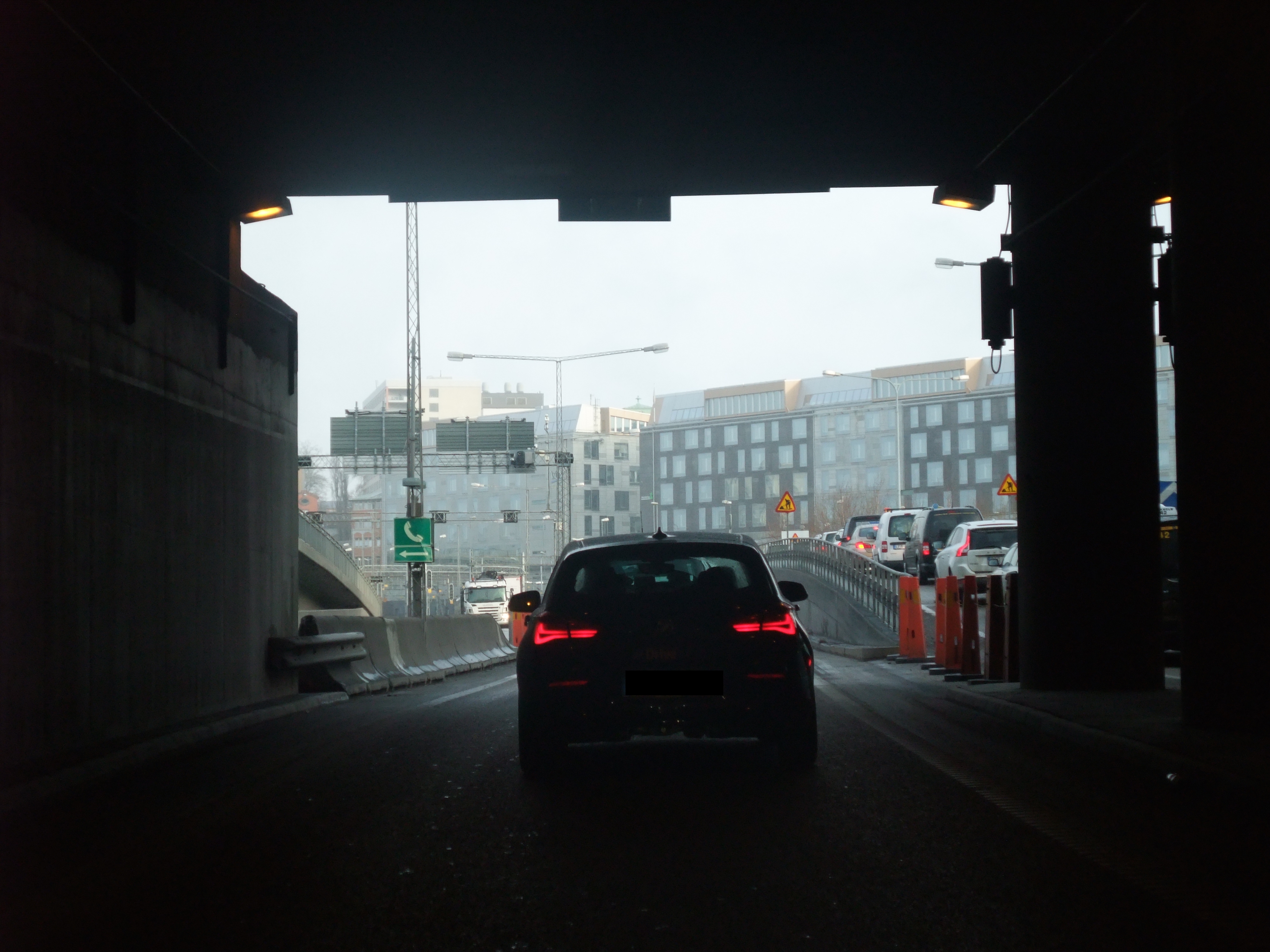Autonomous cars. You might be wondering why Tellus Think Tank, wannabe world saver, is caring so much about the future of vehicles? Currently cars pollute our air, cause huge carbon dioxide emittances, are loud and limiting to lively outdoor urban communities. The Tellus Think Tank team looks towards the future of vehicles to find a better more people friendly way of conducting our daily traffic. We are visiting Gothenburg – a city soon equipped with 100 self driving autonomous cars! Text: Domi, Tellus Think Tank. Photo: AnnVixen
More inspiration on moving lives and communities of our planet into sustainable boundaries!
What is the big deal with autonomous cars?
Self driving autonomous cars may seem weird or scary to some and inspiring and exciting to others.
Imagine some of these scenarios of what could be possible for the future of transportation – when only self driving autonomous cars are in traffic:
- It’s 08.00 and you are getting ready to leave home to go to work. You ask your mobile wrist phone to send a car, tell it how many people will be travelling and where you are going…you are going to work, on your own and want the fast, cheaper and comfortable commuter train to take you the largest part of the way.
The central traffic system sends you a message that an autonomous taxi for one person will arrive at your doorstep within 2 minutes to take you to the commuter station. This is exactly what happens. You arrive at the station with two minutes margin and easily catch the quiet commuter train to the city and arrive at work on time.The cost of travelling is deducted from your account. When you left the car at the station drop-off zone the central traffic system sent the car directly to a new assignment. There are no visible parking spaces around the commuter station but you feel at ease with that as you will have an autonomous taxi pick you and your spouse up at the commuter station on your way home. - Your 12 year old twins and four neighbourhood children have football practice this

Future scenario: No cars in streets – more room for children. Foto: AnnVixen evening and at their request an autonomous electrical minibus picks them up to take them to the field together.
- You and your family of 5 are visiting your parents, about 1.5 hour drive from your home. The autonomous taxi gets you there safely, cleaner and faster to your destination by joining a car convoy on the autonomous-only highway. You and your family are using the travel time to engage in the game of monopoly that you brought with you for the ride.
- Road signs were taken down years ago, as autonomous traffic relies on online data

Future scenario: Traffic signs have been taken down… Photo: AnnVixen from the central traffic system. There are no cars parked in the streets. Your community is discussing if the overcapacity of the local streets could be turned into a community urban farm, make room for a new sportsfield or more houses. Or would all three options be possible?
- It is even cheaper to use the autonomous self driving local buses, they run silently, fast and safe. Even though it is raining you don’t mind walking 5 minutes to the indoor bus station where the buses come in with a high frequency, and you enjoy the ride down to the supermarket or to the gym down the road.
- You dare send your 5 year old across the street to ask for a cup of sugar, it is safe as the autonomous cars that might be passing will be aware of your child’s presence. Before dinner your children will be biking in the street for an hour, playing with their friends.
- Traffic is quiet. You stand on your toes and peek over the high fence at the back of

Peeking onto the quiet self-driving motorway of the future. Photo: VincentVixen your garden to look out over the peak hour traffic of the motorway – hundreds of cars are passing and you didn’t hear them once – forgot they were there, did you?
You normally sleep with your windows open and are woken only by the song of the birds.
I hope that these scenarios give an insight as to how important electrical and self driving cars are – and what all the fuss is about – they will shape our future way of living.
So what is being done to move society towards the traffic of the future?
Is the car industry on track to making the future happen?
The ascent of the autonomous car might be the descent of the larger car industry and the car producers are keen to be in the first line of the autonomous car development as the earliest marketed autonomous cars might be the market winners of the future.
Many of us have heard or read about the Google Car trials in fair weathered Mountain View in California. In my online research I find that Google is also performing trials both in the hotter climate of Austin in Texas and in Kirkland, a suburb to the rainy and snowy city of Seattle in Washington state – all three trial areas are found in the USA.
You might also have read that the United Kingdom is requesting that Google Cars are introduced to trials in the streets of London.
Exactly how Google is planning to commercialise their car trials is not clear yet however John Krafcik, former CEO of Hyundai and TrueCar and by some called a “car guy”, was recently recruited to the role as CEO of Google Cars.

I turn to Swedish run Volvo Cars as they are planning the largest real customer trials with 100 autonomous cars running on real streets in the urban area of Gothenburg, Sweden.
Taking the seven scenarios of self driving cars into consideration Marcus Rothoff must currently have one of the coolest jobs in the world – Autonomous Driving Program Director and head of implementation of Volvos self driving cars. He smiles and nods in agreement and humbly says it is very inspiring to be able to work in an area that might just change the way we live in the future.
According to Marcus all major car manufacturers are currently looking at the autonomous car development, to mention some: Audi, Volkswagen, Hyundai, Mercedes, BMW, Tesla, Nissan, Toyota, Renault, Ford, GM.
Online rumours say that Apple are doing something too, as they are hiring one thousand engineers in the area of autonomous cars, but nobody seems to know exactly what they are up to.
The eight scenarios above of fully autonomous traffic is still far away. How far down the autonomous track will the first cars on the market reach?
DriveMe is an autonomous car project run in cooperation between Volvo Cars, Gothenburg City, Swedish government agencies and Chalmers University of Technology

The Swedish DriveMe trial is a project built on a unique collaboration between parties that CEO of Gothenburg City, Lars-Bertil Ekman, calls academia, industry and community.
The parties are Gothenburg City, the Swedish Transport Administration (vägverket), Chalmers University of Technology, Autoliv and Volvo Cars.
Marcus Rothoff is also Götethe project manager of the DriveMe project and plans to be placing 100 self driving cars on trial on the streets of Gothenburg in 2017.
-The city of Gothenburg is participating in the DriveMe-project as we want to remove the overpowering amount of cars from the city core, says Lars-Bertil Ekman.
We want to find better parking solutions for the city and clear public spaces such as streets and squares from cars and make them available to bicycles and pedestrians which will make streets more lively. Read more about this urban trend: Stockholm turns traffic pyramid upside down.

Lars-Bertil talks about keeping cars in the city center but adjusting parking to the pre-requisites of the autonomous self driving cars. Autonomous cars could be packed tighter than today in buildings with lower ceilings, less lighting and wouldn’t need to be located in the very centre or even above ground as humans would very seldom would be entering the parking building.
Lars-Bertil’s parking vision for the city is still far away though, especially as the DriveMe-project will initially not be running cars in self driving mode in the city but rather on the motorways.
Volvo Cars asked drivers what part of the driving they liked the least and would wish to be rid of. The almost unanimous answer was commuter driving in queues to and from work. The DriveMe-project is therefo

re focusing their first autonomous trials on motorways so that drivers can do other things when travelling.
Marcus and I engage in what happens when the human driver hands over the control to the car. Marcus says it has to be very clear who is in control and that there should be no unclarity here, either it is the driver or it is the car. The biggest risks are when handing the control back and forward it seems. Marcus gives me a morning scenario:
“You get in your Volvo and tell the navigator your destination and start the drive to work. You manoeuvre the car up on to the motorway where you ask the car to take over. It considers circumstances like weather, reported traffic incidents and checks that the road is equipped with a barrier between you and meeting traffic and then takes over. The car informs you that it would like to give the control back to you in eight minutes which gives

you a two minute margin to take over before you arrive at the motorway exit by your workplace. During these eight minutes you pick up your computer, read, send a few emails and are ready to take back the controls when the car says it is time”.
I ask what happens it the driver doesn’t take over when the car requests to hand back the control and learn that the car then goes into “safety mode”. The car manoeuvres itself to the closest safe parking space so that you can take over the controls again when it suits you.

This gives you time to finish sending your emails or your phone call.
Volvos first autonomous self driving cars will be Plug-in Hybrids with an electrical range of 40 kilometers, the fuel part will be petrol fuelled. Marcus says that most people have their workplace within 40 kilometers of their home. It will also be possible to choose when to run the car on the electric drive or petrol. All Volvo Cars are built on fuel efficient 4-cylinder engines since a couple of years back and have even won prizes such as the Volvo SUV that was appointed SUV of the year in US, 2015.
The trial, where Volvo will lend 100 real customers a self driving car, will be running on real streets in the Gothenburg region from 2017. Marcus says it is important that the 100 trial drivers use the cars differently but frequently so that as much data as possible can be gathered during the trial period. Google Cars already communicate having 1 million miles of test data.
The period up until the start of the Volvo DriveMe trial will focus on developing the most

safe self driving car possible and the trial itself is considered to be a period to gather evidence that the car is really safe.
We hope to have the first self driving Volvo cars on market by 2020! Says Marcus Rothoff. And 2020 is also the year that Volvo has set as a goal for their vision of zero lethal accidents in a Volvo car which I find to be a very inspiring goal, lets hope they make it!
Multi-disciplinary traffic systems
Often when talking about the development of the future we understand that by mixing disciplines we can go much further than if we did not – read about Plantagon – planning Urban Farming of the future.
When introducing self driving cars on roads they will not only be self driving at times but guided by information from a central traffic system.

Developing self driving autonomous cars and central traffic systems to guide them will include disciplines like technical development, digital development, human psychology, interaction between humans and machines, artificial intelligence, community development, traffic statistics, incident- and accident statistics, safety, legal systems to mention a few.
The high complexity of multiple disciplines when introducing self driving autonomous cars and developing the traffic systems of the future is a very good reason for this not to be an area solely developed by car manufacturers, or only by men (which is often the case today).
The most challenging period is still ahead. It will be when two traffic systems (manual driving and autonomous driving) have to be run in parallel. The current traffic system is based on humans driving cars with guidance from signs etc. In parallel autonomous cars will be on the street, not needing street sign guidance, but will have to deal with them too. Double systems will mean double costs for a period. Driving might first become more expensive before it gets cheaper. Hopefully society can make a fast transition by phasing out “the old system of manually driven cars”.
Watch film on the coming autonomous self-driving cars by Volvo
The DriveMe project, as Lars-Bertil Ekman told us, is unique. There are many parties cooperating in developing a future traffic system for the Volvo self driving cars. The Swedish Transport Administration, one of the parties, is also involved in both national investigations and an international cooperation with the purpose of laying the foundation for future international traffic guidelines for autonomous self driving cars.
Another party involved in the DriveMe project is Chalmers University of Technology that runs about 20 sub projects with articulately defined deliveries, fitted in size to fit PHD students heading towards a doctor degree.
We have seen that cooperation between community, industry and academia can be very successful – check out the four Tellus Think Tank articles on Newcastle – which makes me believe that the Volvo DriveMe project will be laying some very important parts for the foundation of the traffic systems of the future!
Next week: We start an investigation on organic food, first talk will be with a passionate breeder of pigs, if your are interested in what you are eating you might find this article interesting!
Click here to be notified when Tellus Think Tank’s next article is available – investigating inspiring sustainable happenings around the world!

